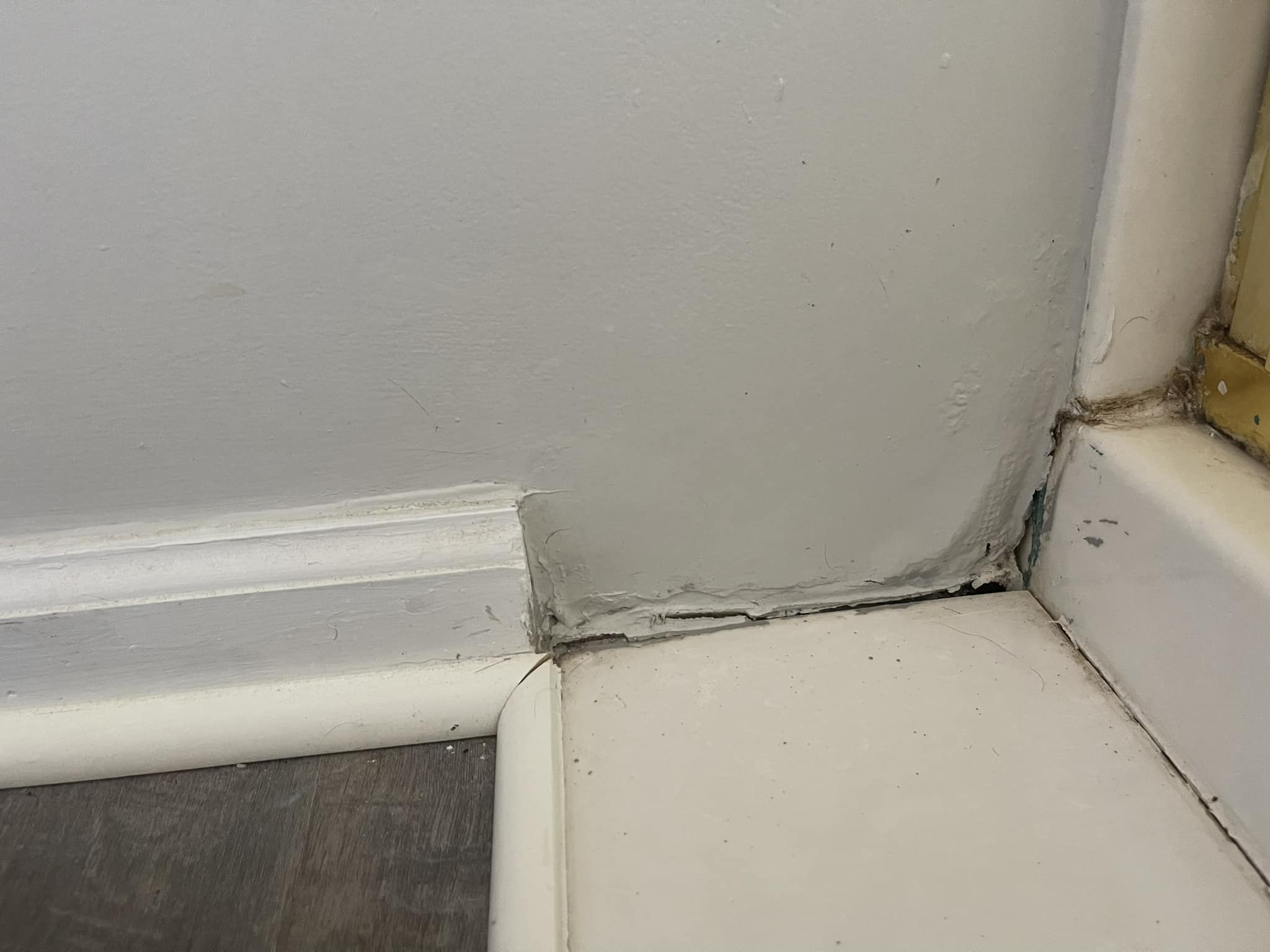Should I remove and replace the drywall next to my shower with tile or waterproof material?
1 year ago
Last Updated: April 27, 2024
Do you see this drywall next to the shower? I think it would have been better if it had tile on it from the start. I’m thinking of fixing it up by replacing the drywall with tile or something waterproof. What do you think is the best way to go about this? Just started the process of redoing the whole shower.

Seems like there might be a leak in your shower door
I’m a bit confused by what I’m seeing. Why is there quarter round there, and why did they stop the trim at the wall? Is that drywall on the floor? So many questions.
Isn’t it crazy the things people do in construction? I have the same questions living here! We’re working on repairs now but I’ve always been curious why there’s no pvc here and why there’s so much molding or tile etc on that 6-inch threshold!
You should consider reapplying silicone to the shower door where it connects to the wall and bottom plate. Installing a new clear rubber strip for the door would also help. They tend to leak a bit, but not as much as this.
: Yeah, I definitely need a rubber strip. It’s part of the issue for sure along with the caulking, so I’m currently caulking!
: Oh wow. Yeah, it’s likely more the strip than the silicone. Doing both will make a big difference though.
: The old one is really gross, so I guess I will have to remove the door to replace it, historically it would slide out and I put a new one.
I used PVC baseboard with silicone caulk for mine
What’s happening in this area? Could you snap a photo from a distance?
Kevin s is concerned about water damage, mold, and structural issues. 😞 The OP should address this promptly to prevent further damage.
Seems to be dealing with a situation involving the shower curb and flooring, I should get more details before offering advice.
Kevin s, here’s a picture from further back. ‘s observation is spot on. I think this problem existed before we bought the house, and we’re only now getting around to fixing things like this.
I always make sure to extend my tile 6 inches past the shower pan or tub to prevent water damage. Water damage is common next to showers.
Why does the trim end there? What’s that 6 inches away from the shower? It definitely needs to be completely redone and waterproofed!
Exactly, that’s how the water damage happened.
People should remember to close the shower doors properly to prevent water from seeping through and causing moisture issues.
It seems like the shower door is leaking… that’s probably why there’s damage there.
Yeah, that too considering the hard water stains that have built up there.
Just remove the bad section and patch it back in after fixing the issue.
Azek is a durable and low-maintenance building material that is perfect for outdoor decks and porches.
I installed a 6×12 tile in that spot
Start by recaulking the shower on the right side where the water damage is, then proceed with whatever action you decide on.
Add some fresh drywall patches and finish it off with pvc trim
We encountered the same problem. After removing the shower door, we noticed water seeping out due to old caulk at the corner where the wall panels and bottom pan meet. We recaulked everything, reassembled it, and so far, no more leaks. I would suggest doing that before repairing the wall.
When you remodel the bathroom, think about using pvc trim. Wood or mdf trim near a tub or shower can be damaged by moisture, leading to mold growth. It’s best to avoid that.
Makes a good point. It’s surprising there isn’t PVC in the bathroom already.
Even when the shower door is functioning fine, there will likely be some water dripping onto the drywall. The only place for the water to go seems to be the sides of the drywall. My plan is to cut out a section of the drywall and check for mold. I’ll use borax and maybe leave the inner wall open for ventilation. I’ll make necessary changes to prevent water from seeping into the wall. Using quarter round on the floor doesn’t seem practical. The question is whether to completely redo the floor now or find a way to catch the water drips with a rug or floor towel, without letting the water flow into the wall.